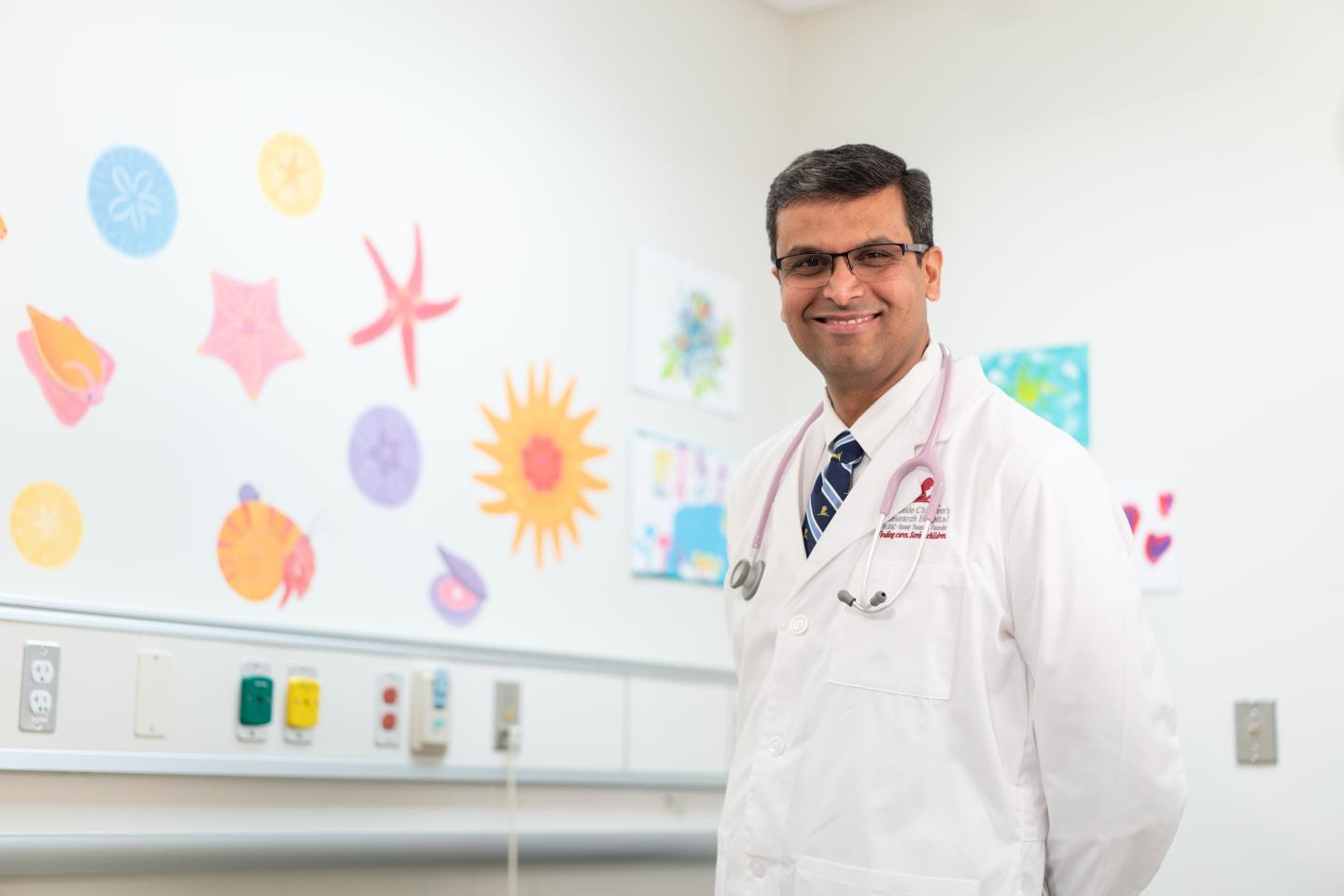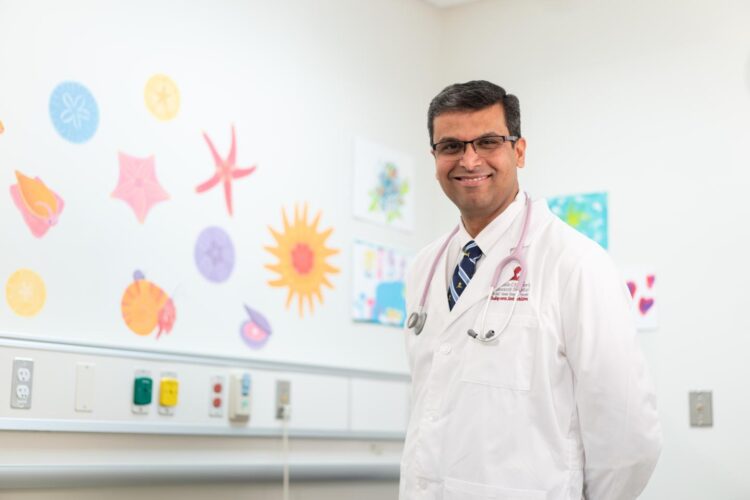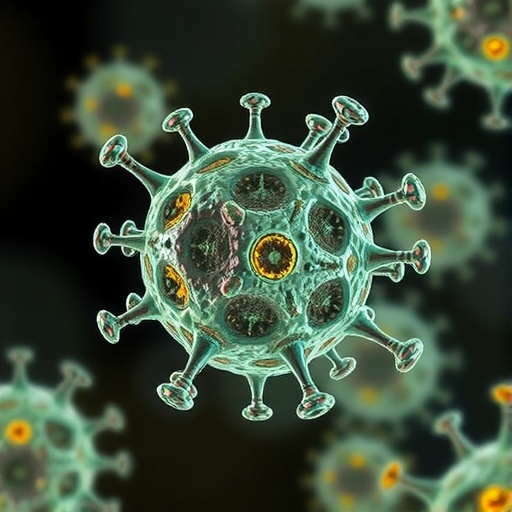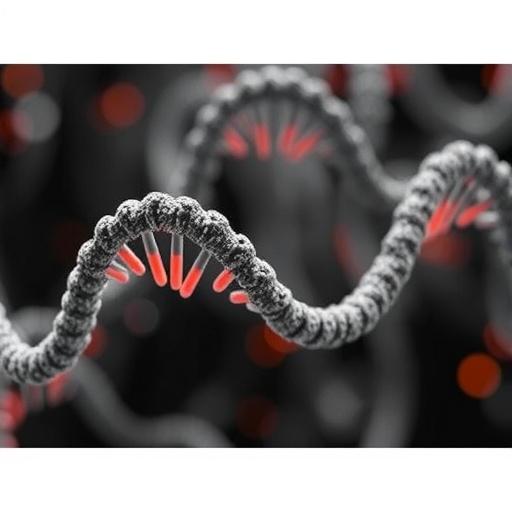Scientists at St. Jude Children’s Research Hospital are learning more about what the molecular groups of a rare pediatric brain tumor mean for clinical care.

Credit: St. Jude Children’s Research Hospital
Atypical teratoid rhabdoid tumor (ATRT) is a rare brain tumor that predominantly occurs in young children. Scientists at St. Jude Children’s Research Hospital used data from two clinical trials to study the molecular groups of ATRT and correlate them with clinical outcomes. A paper detailing the findings was published today in Clinical Cancer Research, a journal of the American Association for Cancer Research.
“If you look at the biology of ATRT, we have learned in the last few years that this is not a single disease but instead there are at least three biologically different groups of the same disease,” said first and corresponding author Santhosh Upadhyaya, M.D., St. Jude Department of Oncology. “But what are the outcomes for these different groups? That is where the current St. Jude study offers insight into how these different groups of ATRT can present, and what their outcomes may be with different treatment regimens.”
There are three previously established molecular groups of ATRT: ATRT-MYC, ATRT-SHH, and ATRT-TYR. Researchers used data from the SJYC07 and SJMB03 clinical trials to look at treatment outcomes from 74 children with ATRT. This is one of the largest cohorts of children with this disease, because ATRT is a rare pediatric cancer.
Findings showed that ATRT-TYR typically occurs in children younger than 3 years old and is less likely to metastasize. They also found that ATRT-SHH tends to occur in very young children and has a higher chance of metastasis at presentation. Additionally, although children with ATRT-TYR had the best overall response, those with ATRT-SHH and ATRT-MYC had comparable treatment responses in the absence of metastases.
The researchers also looked at the SMARCB1 gene in the blood–a hallmark genetic mutation found in ATRT. The scientists showed that approximately a third of tested children have an abnormality in the SMARCB1 gene. These children tend to develop ATRT at a younger age and are more likely to have the ATRT-SHH group. The researchers found that having this abnormality did not predict treatment outcome.
“While we have clearly made giant strides in understanding the molecular basis of ATRT, substantial progress is still required before treatment decisions can be made on the basis of different molecular groups,” Upadhyaya said.
Age and metastasis still guide the way
The mortality rate for ATRT is around 70%, and children are typically diagnosed under the age of 3. Age of the child at diagnosis and the extent of metastatic spread remain the two most important factors to consider for prognosis and treatment of this disease.
Children who are older when they are diagnosed and who do not have metastatic spread typically experience the best outcomes. Children under the age of 3 cannot be treated with the radiation therapy offered to older children, which affects outcomes. The researchers stress that children in each group have a chance for a positive outcome, keeping in mind their age and metastatic status.
“Although a better understanding of the molecular groups of ATRT is important for developing the next generation of treatments for this disease, age at diagnosis and metastatic spread are still the most important clinical factors to consider,” said senior author Amar Gajjar, M.D., St. Jude Department of Pediatric Medicine chair.
###
The study’s other St. Jude authors are Giles Robinson, Arzu Onar-Thomas, Brent Orr, Gang Wu, Catherine Billups, Ruth Tatevossian, Sandeep Kumar Dhanda, Ashok Srinivasan, Ibrahim Qaddoumi, Anna Vinitsky, Gregory Armstrong, Roya Mostafavi, Paul Klimo Jr., Zoltan Patay, Kim Nichols, Frederick Boop, Thomas Merchant and David Ellison. Other authors on the study are Pascal Johann, Hopp Children’s Cancer Center Heidelberg and German Cancer Research Center; Marcel Kool of Hopp Children’s Cancer Center Heidelberg, German Cancer Research Center and Princess Maxima Center for Pediatric Oncology; Alberto Broniscer, Children’s Hospital of Pittsburgh; Anne Bendel, Children’s Minnesota; Tim Hassall, Royal Children’s Hospital Brisbane; Sonia Partap and Paul Fisher, Stanford University; John Crawford, University of California San Diego and Rady Children’s Hospital; Murali Chintagumpala, Texas Children’s Cancer Center; Eric Bouffet, the Hospital for Sick Children; Sridharan Gururangan, McKnight Brain Institute, University of Florida; Robert Sanders, Communicare Health Centers; and Daniel Indelicato, University of Florida Health.
The research at St. Jude was funded in part by a grant from the National Institutes of Health (CA21765), and ALSAC, the fundraising and awareness organization of St. Jude.
St. Jude Children’s Research Hospital
St. Jude Children’s Research Hospital is leading the way the world understands, treats and cures childhood cancer and other life-threatening diseases. It is the only National Cancer Institute-designated Comprehensive Cancer Center devoted solely to children. Treatments developed at St. Jude have helped push the overall childhood cancer survival rate from 20% to 80% since the hospital opened more than 50 years ago. St. Jude freely shares the breakthroughs it makes, and every child saved at St. Jude means doctors and scientists worldwide can use that knowledge to save thousands more children. Families never receive a bill from St. Jude for treatment, travel, housing and food — because all a family should worry about is helping their child live. To learn more, visit stjude.org or follow St. Jude on social media at @stjuderesearch.
Media Contact
Katy Hobgood
[email protected]
Related Journal Article
http://dx.





